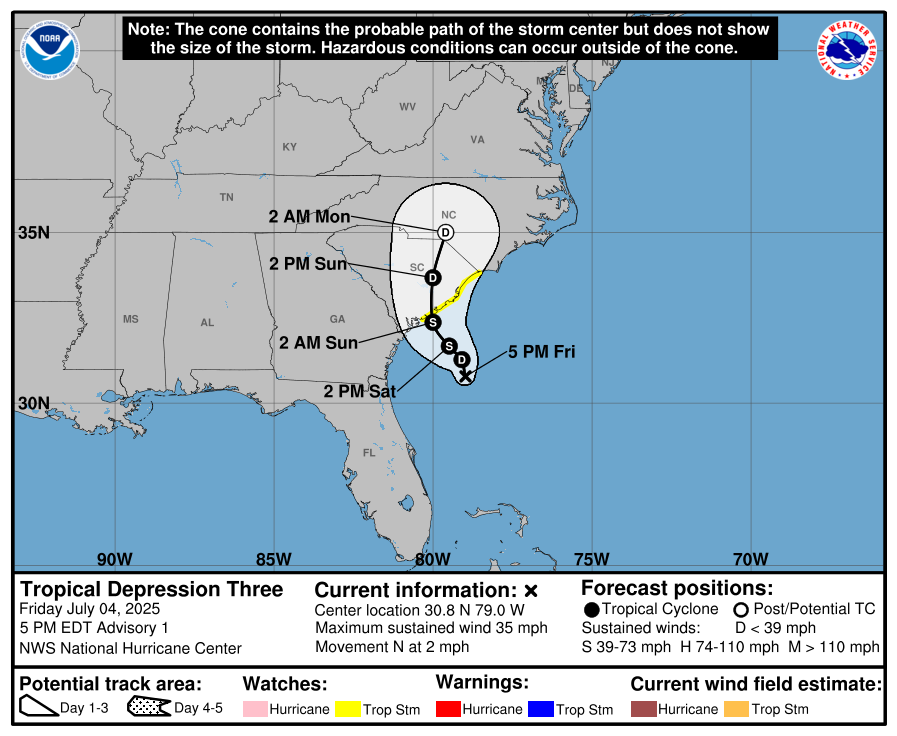
NOAA National Hurricane Center Tropical Depression Three 2025 Projected Path
CHARLESTON, South Carolina – NOAA‘s National Hurricane Center issued a Public Advisory at 11 a.m. Eastern Daylight Time on Friday, July 4, 2025, due to the presence of Tropical Depression Three that is forecast to strengthen into Tropical Storm Chantal before making landfall on the South Carolina coast.
A Tropical Storm Watch has been issued from Edisto Beach, South Carolina to Little River Inlet, South Carolina.
A Tropical Storm Watch means that tropical storm conditions are possible within the watch area, generally within 48 hours.
Tropical Depression Three (formerly Invest 92L) is located about 150 miles south-southeast of Charleston, South Carolina, and is moving to the north at 2 mph (4 km/h).
NHC forecasters say that a slow motion toward the north-northwest is expected through Saturday, followed by a motion toward the north Saturday night and Sunday.
On the official NHC forecast track, the center of the tropical cyclone is expected to move near or over the coast of South Carolina Sunday morning.
Computer models, often referred to as spaghetti models, show Tropical Depression Three moving to the north-northwest toward South Carolina and North Carolina.
While the guidance generally agrees with this scenario, there is considerable spread in both the forecast direction and speed, with the HWRF being a notable right outlier.
The official NHC forecast track is in best agreement with the GFS (American model) and the HCCA corrected consensus model.
Reports from an Air Force Reserve Hurricane Hunter data indicate that Tropical Depression Three has maximum sustained winds of 35 mph (55 km/h), with higher gusts.
Gradual strengthening is expected, and the system is forecast to become Tropical Storm Chantal on Saturday.
NOAA forecasts an “above-normal” 2025 Atlantic Hurricane Season, which runs from June 1 through November 30.
Although peak hurricane season isn’t until September 10, hurricane and tropical storm activity begins to pick up in early July, according to NOAA and the National Weather Service’s historical hurricane activity data.
Copyright 2023-2025 FloridaWord.com